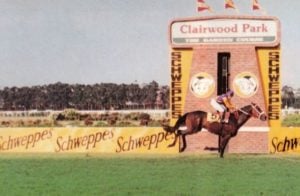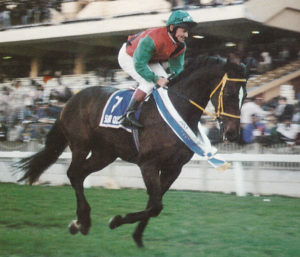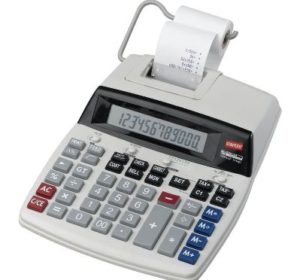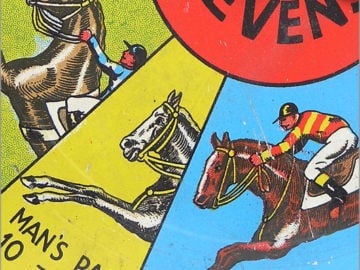Some decades ago, the South African racing diet consisted of Condition Races and Handicaps.
Condition races were mainly Plate races, a concept pioneered by the OTA in the Cape. Plate racing embraced Maiden, Novice, Graduation and Progress Plates, where weights were set according to races won, with a sex allowance for fillies and mares.

Handicap racing varied from racing centre to racing centre, and even within racing centres.
This was because individual racelubs (of which there were many) happily employed their own handicappers, each with their own set of handicapping rules and views. This inevitably led to anomalies, which owners & trainers were free to exploit.
In time, the desire to have a more centralised handicapping system led to introduction of Race Figure handicapping. This wasn’t handicapping in the true sense, but an merely extension of the Plate racing concept. Instead of having fixed penalties for winning races (usually 3kg per win), the official handicapper used discretion to decrease or increase the penalty.
Horses would all start off with a base figure, which then was increased over time according to performance and the handicappers impressions of that performance.
Race Figure handicapping allowed the horses ‘to go through the divisions’, and ensured that the better horses won the most races, and that horses of a certain level of ability could win a number of races that related to that ability. The system inherently catered for rewarding excellence.
A Race Figure was in essence a reflection of a horse’s progress in time, and not of a horse’s inherent ability, which does not change over time.
Race Figure handicapping was therefore quite different from handicapping in the traditional (English) sense, where performance is measured irrespective of races won and where weights are set according to (apparent) inherent ability of the horses, in combination with Weight-for-age allowances.

Traditionally, many of the major races on the South African calendar have been handicap races.
This had grown historically out of a need to cater for the wide difference of ability among relatively few horses at the top of the racing ranks. To have major events at level weights would have meant that the same (best) horses won everything, with a negative effect on betting and general interest.
During the late ‘Eighties, controversy grew over the use of Race Figures to set weights for the major handicap races. They were not a true reflection of ability, and hence major handicap race winners were not always the ‘deserving’ winners.
The Jockey Club recorgnised this problem and established a Handicapping workgroup, with a large number of members drawn from all layers of the racing industry. The committee bumbled along for several years without any apparent progress in making recommendations. This was due entirely to a complete lack of understanding by committee members of what traditional (English) handicapping encompassed.
It wasn’t until the Jockey Club invited seasoned English senior handicapper Geoffrey Gibbs that finality was reached. Gibbs was sufficiently scathing in his report on Race Figure handicapping for the Jockey Club to recommend swift action, and introduce ‘real’ handicapping with Merit Ratings.
Progress & Retro
In the process of implementing this radical change, the major mistake was made to drop the Race Figure concept from the programming calendar altogether.
Race Figures, as outlined above, fulfilled the real need for the better horses to win the most races.
Merit Rating handicapping could not do this, simply because it was designed to make things equal for all.
It wasn’t long before there was revolt in the ranks.
The better horses found their place in the handicap far too soon in the eyes of many, and winning opportunities diminished.
 Accustomed as the masses were to the Race Figure ‘progress’ opportunities, Merit Rating handicapping failed to pass muster.
Accustomed as the masses were to the Race Figure ‘progress’ opportunities, Merit Rating handicapping failed to pass muster.
That this was a result of a lack of proper programming diet of MR races vs. Conditions races (the RF races) no one seemed to realize. Again, a solid understanding of what ‘real’ handicapping represents lay at the base of the troubles.
Lobbying by interested parties (trainers especially), led to the introduction of ‘rules’ which influenced what the official handicapper could and could not do. This in turn caused the MR handicapping system to be poisoned by anomalies. Once in the system, their effect took time to work itself out, if at all.
For every exception rule a knock-on effect ripples through the system, and prejudices or benefits unexpected parties. The inherent fairness of the handicapping system was severely compromised by ‘rules’. That the rules were made by parties without any understanding of the system, and were based on unproven or airey-fairy assumptions, only made matters worse.
The latest round of Handicappers Protocols, dated October 2009, does nothing to alleviate the real problems. If anything, it will simply continue to poison the bloodstream.
Solution
The ideal racing program must consist of a balanced combination of Merit Rating races (real handicaps) and Conditions races (Maiden and Plate/Race Figure races, or any other races with conditions relevant to specific situations – let imagination run wild. A modern system of Race Figures for Conditions races could easily be computerised.
With this scenario a trainer will have the option to run (or avoid running) in handicaps, with any of his horses at any time during the course of a horse’s career. An option which at present is not available.
Condition races can ensure that the better horses retain winning opportunities, and ‘go through the ranks’.
Handicap races will ensure competitiveness especially in the lower ranks, providing earning opportunities which otherwise would not exist.
Conditions races will give punters opportunities to find winners by studying form (and use Merit Ratings), the ‘mindgame’ aspect of racing.
Conditions races should provide a high proportion of shorter priced winners, which benefits the racing operators because of the lower ‘churn’ factor.
Handicap races should help racing to retain the ‘surprise’ factor, which makes for unexpected windfalls for punters at times, and helps retain interest.
Official handicappers should be left alone to do their job, without abnormal restrictions.
It is unreasonable to ask a man to climb a tree and then tie his hands behind his back.
Handicapping works within set rules, but is nevertheless part art, part science.
 To be able to handicap takes extensive hands-on experience, to appreciate the intricacies and pitfalls of the system. The uninitiated should not be allowed to interfere in this process.
To be able to handicap takes extensive hands-on experience, to appreciate the intricacies and pitfalls of the system. The uninitiated should not be allowed to interfere in this process.
Handicappers are not infallible, and mistakes will be made. A process must be in place to help rectifying such mistakes as soon as possible, before they find their way into the depths of the system. This probably means a second tier of appeal, or alternatively a system like the Australians have.
Australia has in 2009 introduced ‘real’ handicapping for the very first time (!). Their approach has been to outsource the rating of horses to a private company, which passes its ratings on to the official handicappers, who then take a final decision as to whether accept or amend the ratings. This is in effect is a second level of quality control on ratings.
The essence of this submission is an appeal to overhaul the existing race programming procedures, and to retain the integrity of the ‘real’ handicapping system without undue interference.
Have Your Say - *Please Use Your Name & Surname*
Comments Policy
The Sporting Post encourages readers to comment in the
spirit of enlightening the topic being discussed, to add opinions or correct
errors. All posts are accepted on the condition that the Sporting Post can at
any time alter, correct or remove comments, either partially or entirely.
All posters are required to post under their actual name and surname - no anonymous posts or use of pseudonyms will be accepted. You can adjust your display name on your account page or to send corrections privately to the Editor. The Sporting Post will not publish comments submitted anonymously or under pseudonyms.
Please note that the views that are published are not necessarily those of the Sporting Post.
14 comments on “Handicapping in South Africa”
Leave a Reply
‹ Previous















Nice article! A continual tinkering of the MR system will simply walk it all the way back to the RF system.
Good, then punters will return to horse racing again! How many horses that ran a PLACE in the Queens plate received HUGE merit rating increases without actually WINNING a race. How many of these horses are now doomed! The future will tell!
Don’t leave us in suspense, Graham.
Which were the placed horses who received HUGE merit rating increases without winning?
And how many are doomed?
Soqrat from 118 to 124, Rainbow Bridge from 110 to 119, does that answer your question Karel?
Karel and Graham, I make Soqrat a 120 and Rainbow Bridge a 116… for now
So let’s say that later in the year, Soqrat puts up another scintillating performance and is proved to be a 124.
Even though he could be a 122+ now, I rather err on the side on caution and have a possible “4 pounds up my sleeve” (120 now) when assessing him when he runs next.
Graham have to agree with you. But Do It Again was also punished by 5 half kilos (120->125). The handicappers (wearing their line-horse hat) decided that he had run 8 half kilos above his July win.
There is a fundamental flaw in the line horse argument and looking for such a horse is imo fools gold. In a race such as the Queens Plate which has WFA form going back to 1948, there are other means to establish the standard for that race and hence the performance you see, and it does not require a line horse to confirm said performance. If you rate a race based on standards (as in class handicapping) or pars (as in speed/time handicapping) you also know that you simply do not need a line horse and that in fact looking for one leads to the type of “mistake” they made in assessing the Queens Plate.
If I had to handicap an all age Grade 1 race, where all barring one was a progressive three-year-old, and award the first three increased ratings of 5, 5 and 9 half-kilos I’d be questioning very strongly if there was something wrong with my assumptions. The handicappers seem to have reached the conclusion that the fast pace dragged the best performance out of the top six barring Legal Eagle and hence made an upward adjustments on the first three. Where I think they went wrong is in not considering that the fast initial pace may have compromised some runners, which I believe were Undercover Agent and Snowdance, and that neither of those two ran to their best rating.
There is very seldom a true run race. Most races are run too slowly or too fast in segments and so compromise some runners. Within those races however there are horses which run more efficiently than others. Can the handicapper in SA really know which horses those are without sectionals? When in doubt you should not upward rate as was done in the Queens Plate and it will be interesting to see if any of those upward ratings unravel in the future.
As a matter of interest if you would read the following:
On the 14th November 1999 in the Lebelo Handicap Gr3 Fov’s Favourite had a merit rating of 110. His racing record was at the time 32 starts with 10 WINS, 17 PLACES. In the same race Golden Loom had a merit rating of 127. His racing record was 45 starts with 20 wins and 22 places. In the same race Ruby Clipper had a merit rating of 119 with 9 wins and 5 places from 16 starts. also All Will Be Well had a merit rating of 110 with 11 wins and and 30 places from 53 starts! All of these GOOD horses had merit ratings that was proportionate to the amount of wins that they had. Now check the following:
Do It Again has a merit rating of 125 with 5 wins and 3 places from 10 starts!
Undercover Agent has a merit rating of 120 with 6 wins and 4 places from 14 starts
Rainbow Bridge has a merit rating of 119 with 5 wins and 1 place from 7 starts!
Now if anybody wants to tell me that this is fair then its not surprising that I and many others are ex punters. The so called Line horse should be confined to the dust bin! Thats where it belongs!
This is rather disingenuous.
Merit Ratings were only introduced in August 1999, so the record of the horses in Nov 1999 you refer to was established pre-MR, in the racefigure days.
Apart from that, the ages of these horses show they were well seasoned, Golden Loom the oldest as a 7yo. A few of them champions earlier in their careers as well. You don’t know what their MR would have been earlier in their careers had it existed.
You’re comparing apples and pears.
Graham I think we oppose the line horse for very different reasons. You seem to have the MR system flagged as problematic and as a result the use of the line horse. I don’t have a problem with the MR system as long as it is free from statistically unsound restrictions. The cap on how much a rating can increase or decrease being such a restriction. The use of a line horse is for me an unsound way to arrive at a race rating for the reasons I outlined above. It more than likely will always lead to bias in one direction or another.
Really informative.
There is no human being in the world who can judge a horses ability 100%
Why do you guys want to reward the weaker and inferior it’s a joke did any of you see Usain Bolt run with a 10 kg back pack
Go back to the excitement of the best winning and please go back to a horse having to have won three races to get a run in the Guineas remember the hype at milnerton the day senor santa had to win to qualify
Why are you trying to stop the best from winning
I’m harping on a tab but how many top division horses carriers are brought to an end because a human being says hey that one or two time winner is feature race ability with the merit rating system most those horses are done and dusted.That same horse could have been a 6 to 7 time winner by the time it got to the A division by this time most horse had matured and gained the convidense needed to complete at the top division
The owner of the top horses loose out financially never the punter who must be a mathematician to punt at a profit
i agree , take Winchester Mansion for example, after winning the July this horse was not handicapped out of existence! and ran a credible fourth in the November handicap, should run well in the Summer Handicap!